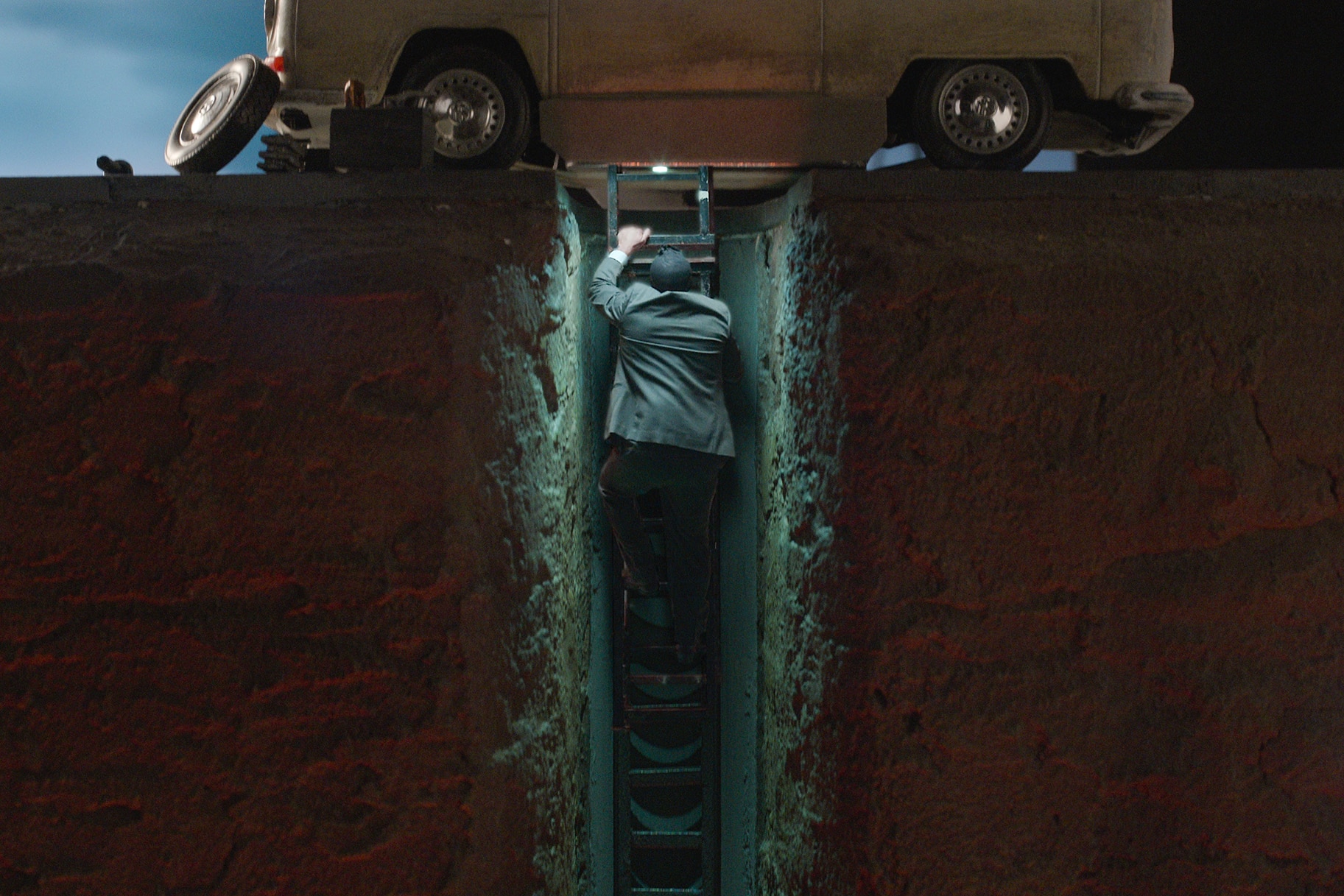Create a free profile to get unlimited access to exclusive videos, breaking news, sweepstakes, and more!
The 'Teenage Mutant Ninja Turtles'-Inspired Heist Behind Netflix's 'Bank Robbers: The Last Great Heist'
As seen in Netflix's "Bank Robbers: The Last Great Heist," Argentinian bank robber Fernando Araujo was inspired by the "Teenage Mutant Ninja Turtles" because they "were in drain pipes doing martial arts and they were green like weed."

“Teenage Mutant Ninja Turtles” — the comics, films and the cartoon television series — warmed the hearts of children across the globe ... and they also apparently inspired an infamous South American bank heist.
“Bank Robbers: the Last Great Heist,” a new Netflix documentary, reflects on the 2006 robbery of Banco Río in Acassuso, Argentina.
Fernando Araujo, who stars in the documentary and is candid about his role in the robbery, was an artist and small-time pot grower when he became obsessed with the idea of robbing a bank in 2003, even renting a house near a Banco Río.
He details in the documentary that he named his scheme the “Donatello Project.” He made it clear that the project was not named after the Renaissance artist, but after the purple-masked "ninja turtle" named for the artist.
“They were in drain pipes doing martial arts and they were green like weed,” he says in the documentary.
He then proceeded to investigate the sewage tunnels beneath the bank as he let his pal, Sebastián García Bolster, in on the idea, GQ reported in 2020. He convinced Bolster, a motorcycle mechanic, to help him calculate how to drill into the bank, so they could make a tunnel between the building’s basement and the sewer beneath. He also recruited Rubén “Beto” de la Torre, Luis Mario Vitette Sellanes and an unknown man referred to as “the Doc.” Julián Zalloecheverría was hired as a driver.
They planned to exit out of the sewers through a manhole, bought a van and customized it with a floor hatch, so they could park that van above the manhole, the New York Post reports.
The team entered the bank, armed with guns, through its front door and took multiple hostages on Friday, Jan. 13, 2006. Soon, Argentinians were watching as the situation unfolded on live television. During the hostage negotiations, the crew even demanded pizza — which makes sense, as any “Teenage Mutant Ninja Turtles” fan knows the turtles love their pizza.
Their elaborate scheme worked out perfectly, despite the absurdity. Not only did the robbers escape into their tunnels and out of the sewer, but they poured chlorine all over the bank to mask their DNA. Furthermore, they planted random hair strands around to confuse investigators.
It could have been one of the world’s most successful heists but in the end, it didn't work out so flawlessly because of de la Torre’s wife, Alicia di Tullio, who took about $300,000 of his share of the proceeds without his permission.
“I come back [home] one day and find my [stash] bag is out of place,” he recalls in the documentary. “I saw the stack of money had dropped, quite a bit.”
They got into a fight and, in retaliation, she turned him into the police.
Her husband, Bolster, Sellanes, Araujo and Zalloecheverría were all arrested and charged. In 2010, de la Torre was sentenced to 15 years, Araujo received 14, Zalloecheverría was sentenced to 10 and Bolster received nine, the New York Post reports. Sellanes also received 14, but for unrelated crimes he was linked to at the time.
All the players were released early and now free. The case inspired the 2020 Argentinian thriller-comedy “The Heist of the Century.”

























